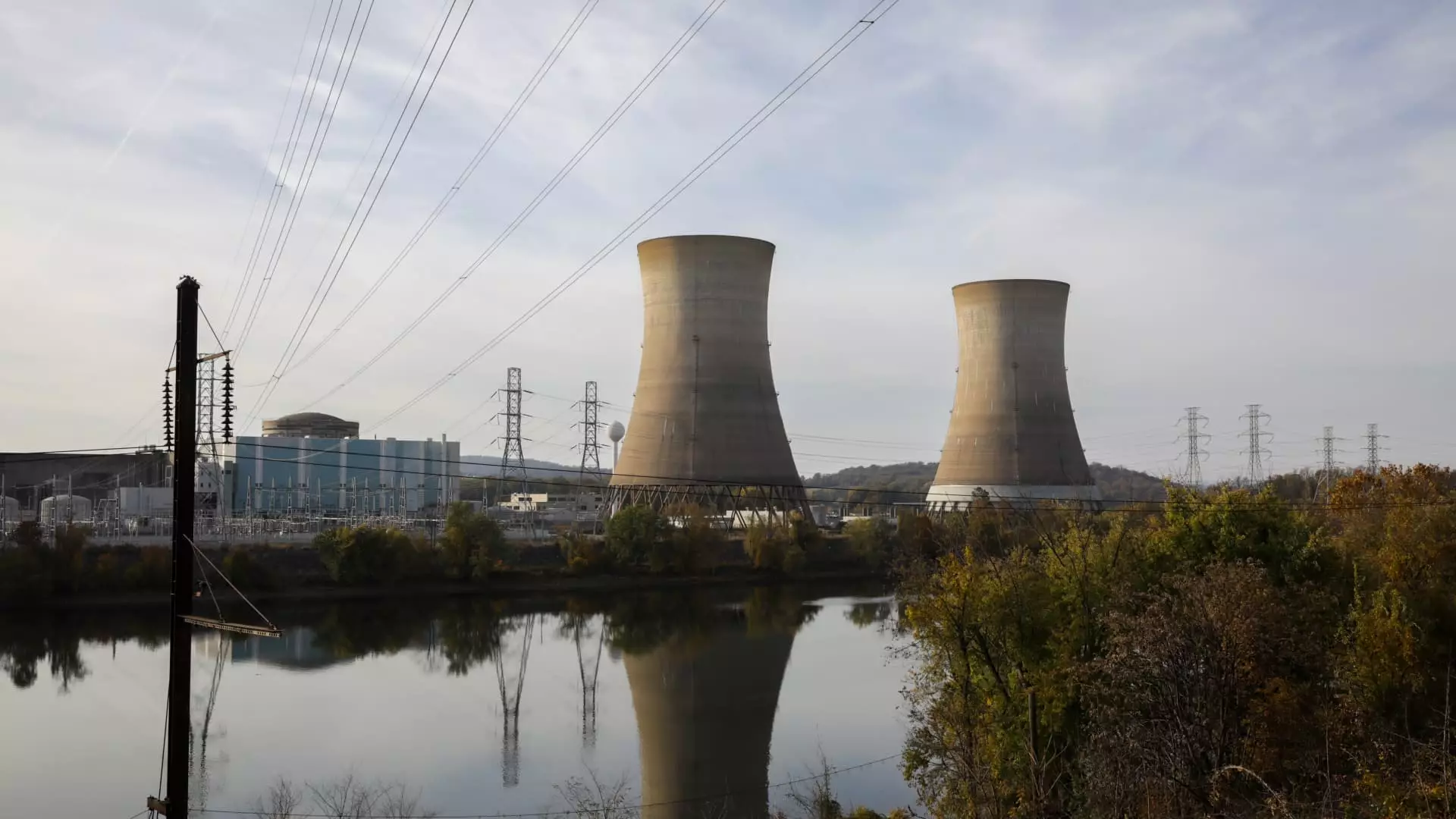The intersection of artificial intelligence (AI) and energy consumption has created a significant ripple in the financial markets, particularly affecting public utilities and power companies. Recent developments, particularly the launch of China’s open-source AI laboratory DeepSeek, have incited skepticism among investors about the actual energy demands of AI applications, leading to sharp declines in the stock prices of several major power companies.
On Monday, notable energy firms like Constellation Energy, Vistra Energy, GE Vernova, and Talen Energy saw their stock prices plummet by significant margins, some exceeding 16%. Speculation surrounding AI data centers had previously buoyed these companies, driving expectations of increased electricity demand. However, the emergence of DeepSeek’s AI technologies appears to have altered this narrative. The market’s reaction reflects growing concerns that the anticipated energy requirements linked to AI might not materialize as previously thought.
Investors were particularly rattled by DeepSeek’s recent introduction of advanced AI models, including one that reportedly poses direct competition to renowned programs from American firms like OpenAI. As these developments unfolded, the market sentiment shifted from one of optimistic growth to cautious reevaluation. This scenario illustrates how swiftly perceptions can change in the tech and energy sectors when new, competitive technologies emerge.
Historically, the tech sector has demanded substantial power resources to support the infrastructure behind data centers. Companies like Microsoft and Amazon have looked favorably toward nuclear energy as a zero-carbon solution to meet their substantial electricity needs. For instance, Constellation’s agreement with Microsoft to revive the Three Mile Island nuclear facility highlights this trend toward seeking reliable energy sources. Meanwhile, Talen Energy powers an Amazon data center with energy from the Susquehanna nuclear plant, demonstrating a growing reliance on nuclear power among leading tech firms.
On the other hand, analysts from Bank of America have expressed skepticism regarding the sustainability of current electricity use expectations within the tech sphere. They argue that the electrical grids in the United States and Europe are notably under-invested and stand as a bottleneck to meeting future load requirements. This raises fundamental questions about whether the anticipated demand for AI innovations is realistic or if it will overextend already strained resources.
DeepSeek’s advancements have received significant acknowledgment, with industry leaders like Scale AI’s CEO Alexandr Wang confirming that DeepSeek’s capabilities have now reached parity with some of the best models in the United States. Microsoft’s CEO has emphasized the energy efficiency of DeepSeek’s technology, signaling that the competitive landscape in the AI sector may shift towards energy-efficient models that challenge current paradigms.
The repercussions for companies heavily invested in traditional forms of energy supply are apparent. As AI models evolve to be more efficient, the initial optimistic projections regarding energy consumption could be rendered obsolete. Bank of America analysts suggest that the rise of DeepSeek raises pressing concerns over the future of U.S. leadership in AI and the associated financial expectations surrounding cloud computing, semiconductor growth, and associated power requirements.
As we move forward, the relationship between AI growth, energy consumption, and the utilities industry seems increasingly fraught with uncertainty. Power companies thriving on the promise of heightened demand must now grapple with new realities posed by competitive AI technologies that might operate on far less energy than anticipated.
The emerging dynamics in the AI sector could reshape how energy companies strategize and invest in their infrastructure. It remains to be seen how these entities will navigate the dual challenges of fostering technological advancement while ensuring a sustainable energy supply. As developments continue to unfold, stakeholders in both sectors must remain agile, adapting to the swiftly changing landscape shaped by technological innovation and market sentiment.

